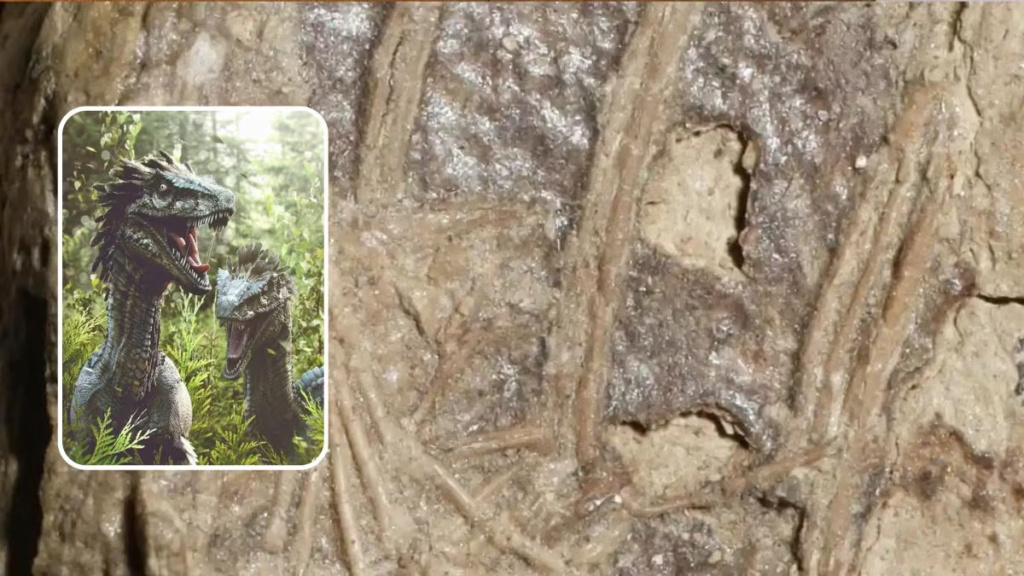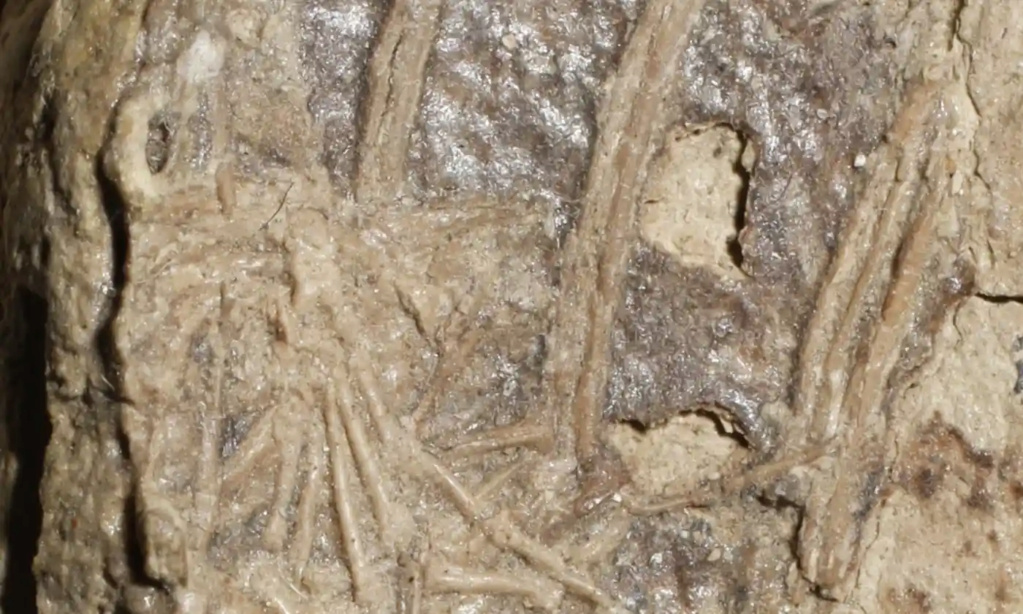Fossilized mammal in a dinosaur's rib cage brings back Jurassic Park fears

Are dinosaurs predators or vegetarians? One of the very exciting questions for scientists, as it is very rare to find food remains in the fossils that were discovered for dinosaurs, especially with their extinction virtually millions of years before the existence of man on Earth.
But the recent discovery of what appears to be a small mouse inside the thorax of a Microraptors dinosaur that had few feathers will reveal some of the mystery about these creatures.
The first discovery of the remains of living organisms inside dinosaur fossils
The dinosaur was able to fly and move between trees to catch prey
The modern finding of prey inside a dinosaur opens the door to learning about how these extinct creatures fed
A group of paleontologists discovered a number of mammalian feet, likely to be a small mouse inside the rib cage of a Mecoraptor dinosaur, which lived in ancient forests where China is now, between 113-125 million years ago.
And the scientists indicated that this is the first live scientific record of a dinosaur eating mammals, and Dr. David Hoon of Queen Mary University in London, who supervised the study, announced that it is extremely rare to obtain examples of leftover food in dinosaurs, so the recent discovery represents a breakthrough to accurately identify what these organisms were living. it already.
Although there is no connection whatsoever between the mammal found in the rib cage of the Mekoraptor dinosaur and humans, the concerns raised by the famous 1993 Jurassic Park movie returned strongly with this discovery.

Perhaps with time it will be discovered that man could have been a delicious meal for these creatures, despite their different sizes.
Scientists announce that Mekoraptor was probably the size of small cats or crows and had the ability to move from one tree to another to prey on small and flightless animals such as mice and others.
Although the sample of this dinosaur has already existed since 2000 and was subjected to many examinations 20 years ago, the researchers confirmed the failure of the previous team to see the remains of another animal inside the dinosaur.
So recent analysis of the remains suggested that the prey was likely a small mouse that lived on the Earth during the time of the dinosaurs and was not a good tree climber.
Source: websites

